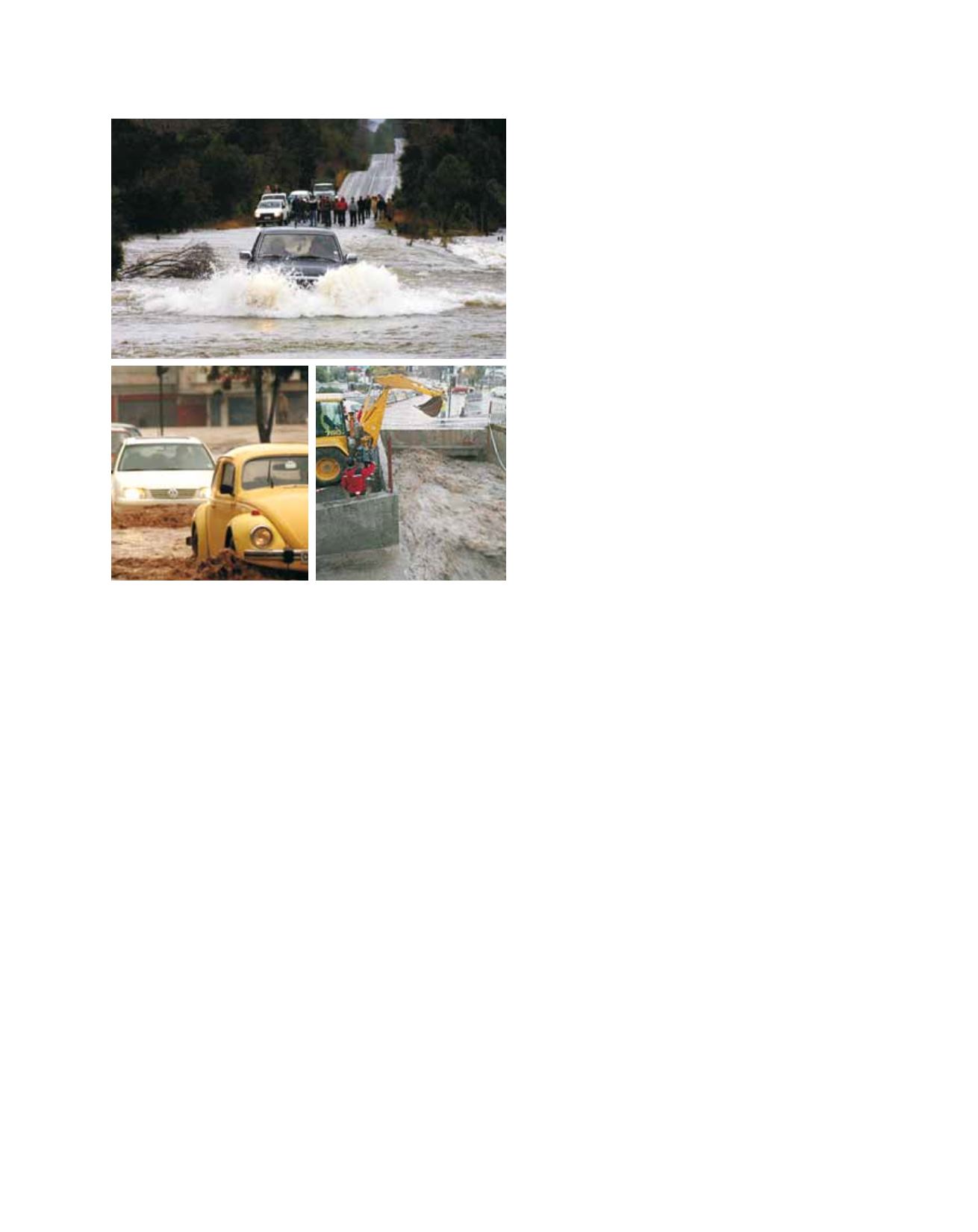

[
] 143
D
isaster
R
isk
R
eduction
• ‘Watch’ and ‘warning’ – more urgent alerts for
events that can affect people and produce moderate
damage to public and private infrastructure,
therefore necessary action should be adopted to
mitigate their effects.
More specifically, ‘watch’ is used when the risk of a
hazardous weather event has increased significantly,
but its occurrence, location, and/or timing is still
uncertain. However, the watch is issued to provide
enough lead time for decision-makers to take
some actions. ‘Warning’ is issued when a hazard-
ous weather event is occurring, is imminent, or has
a very high probability of occurring. A warning is
used for conditions posing a threat to life or prop-
erty. Based on the characteristics of alerts, they are
released first of all to organizations in charge of
civil protection and concurrently to all government
organizations, mass media and the population in
general.
In the case of Chile, these special forecasts are deliv-
ered to the National Emergency Office (ONEMI) of
the Ministry of Internal Affairs and Public Security,
which is responsible for adopting actions to prevent
and mitigate possible threats to people and property.
In particular, several agreements have been made
between the DMC and ONEMI aimed at having precise
procedures whether for the preparation of forecasts,
advices, alerts and alarms; or for their dissemination.
For that reason a Common Alerting Protocol has been
established in 2012, which regulates these activities by
means of detailed guidelines to personnel working in
the different regional meteorological centres along the
country for the preparation, validation and delivering
of these forecasts.
Case study: an extreme event
The central and southern regions are permanently
affected by passing weather systems that can originate
weather-related disasters. The normal duration of the
events exceeds two consecutive days with a recurrence
of 7-10 days. Analysis of the 24-hour accumulated
precipitation, when it has exceeded the 0.66 percentile
(above normal event) at Santiago during the last 100
years, reveals a recurrence of about every two years.
If we consider only those events that fall in the 0.9
percentile (extreme event) the recurrence is around
12 years. On 3 June 2002, a 24-hour accumulation of
111.1 mm and 95.5 mm were recorded at Santiago and
Valparaiso respectively. These are 3.8 and 2.2 larger
than the respective mean values. The event lasted three
days (3-5 June) with a total precipitation accumulation
of 215.9 mm in Santiago and 163.6 mm in Valparaíso,
equivalent to 69 per cent and 44 per cent of the total
annual accumulation respectively. The magnitude and
intensity of the event can be considered as an EWE.
The numerical weather forecasts for these days were
able to predict the event at least three days in advance,
and therefore to alert ONEMI.
with special sensitivity. For example, a precipitation event whose
amount is within the local normal range, but which occurs on a
saturated terrain, can lead to a flooding event. Also, a combination
of weather variables, such as precipitation and temperature, may
trigger a weather-related disaster, although one or both variables by
themselves are within their normal range. For example, precipita-
tion on mountains areas with warm air temperature (isotherm 0 °
C far above its average altitude) can lead to alluviums and floods.
Weather-related disasters might vary from place to place and even
from time to time, not necessarily due to changes in the frequency
and/or magnitude of the events (or the threshold value), but due to
changes in other factors such as land use and topographic alteration
by human activities.
The Weather related Public Alert System
The Dirección Meteorológica de Chile (DMC) is the national
governmental agency responsible for providing weather services
to the country. Among others, an important and permanent role
is to preserve life and property from the changing atmospheric
environment, particularly from weather systems that can develop
to become a EWE, and therefore a threat to the national territory.
When unusual meteorological conditions might lead to high-impact
weather phenomena, the Weather Public Alarm System is activated
by DMC, together with special reports and forecasts as required by
the potential damage in view. The alert system includes:
• Weather advices – forecasts used in situations when the
population is not affected, but should be aware of the occurrence
of a certain event that could lead to situations that may threaten
life and/or property
Image: La Prensa Latina, ONEMI, Newsport.cl
Flooding in urban areas
















